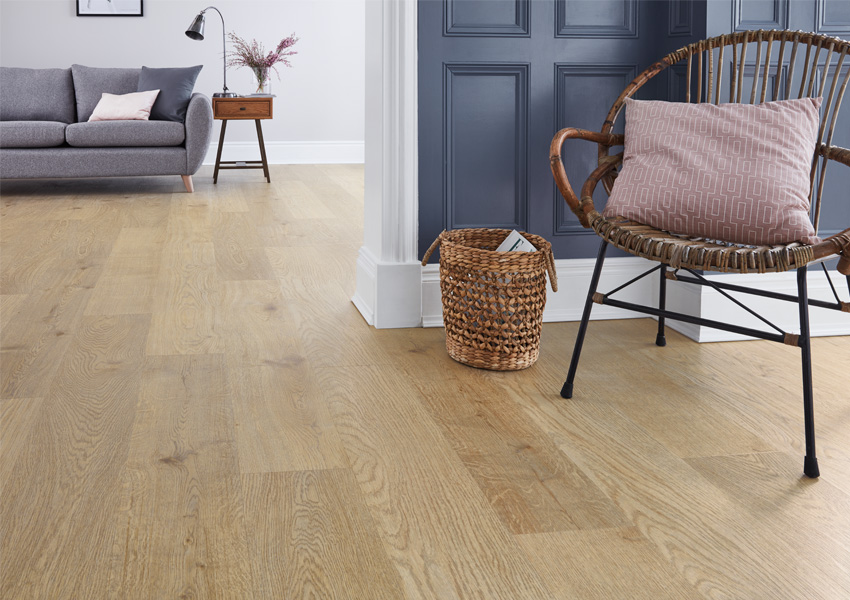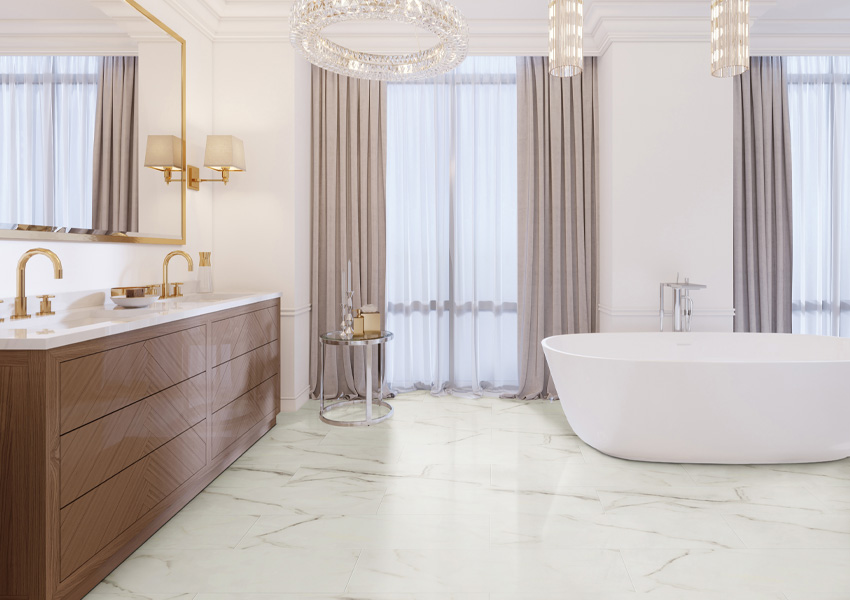LVT (Luxury Vinyl Tile) and LVP (Luxury Vinyl Plank) are two popular options for luxury vinyl flooring, offering durability, style, and affordability. While both are made from high-quality vinyl, the key difference lies in their design: LVT mimics the look of natural stone or ceramic tiles, while LVP is crafted to replicate the appearance of traditional hardwood planks. Whether you're seeking a sleek tile aesthetic or the warmth of wood, understanding the differences between LVT and LVP can help you choose the perfect flooring for your space. Dive into our guide to explore these two exceptional flooring options!

Imagine a flooring option that combines the classic beauty of natural stone or ceramic tile with the unmatched durability of modern technology. That's what Luxury Vinyl Tile (LVT) brings to your space. It's like having the best of both worlds—elegance you can feel underfoot and resilience that stands up to life's spills and thrills. Whether you're aiming for a look that's sleek and modern or warm and traditional, LVT offers a spectrum of styles to match every taste. And because it's built to resist moisture and wear, it's perfect for any room in your house, from the bathroom to the kitchen and beyond.
Now, picture a floor that captures the natural beauty of wood—its textures, its tones, its timeless appeal—but without the maintenance headaches and wear concerns. Luxury Vinyl Plank (LVP) makes this a reality. It's crafted for those who love the look of hardwood but need something more forgiving and flexible. With LVP, you can choose from a variety of wood looks, from the rustic charm of a countryside cabin to the sleek sophistication of a city loft. It's the perfect choice for adding warmth and elegance to any space, all while offering the practical benefits of vinyl's waterproof and durable properties.
When deciding between Luxury Vinyl Tile (LVT) and Luxury Vinyl Plank (LVP), it’s essential to understand their unique features to choose the best option for your space. Both are premium flooring choices, but they differ in appearance, installation, and functionality.
The most noticeable difference lies in their design. LVT is designed to replicate the look of natural stone or ceramic tile, offering a sleek, elegant feel. On the other hand, LVP mimics the look of hardwood, providing a warm, classic aesthetic with wood grain textures and patterns.
LVT allows for creative custom patterns—perfect for adding unique designs to your floors. Meanwhile, LVP offers a seamless, continuous flow, which can make rooms look larger and feel more cohesive, which is ideal for open spaces.
Both LVT and LVP are engineered to withstand daily wear and tear. They’re water-resistant, durable, and easy to clean, making them excellent choices for busy households, pets, or high-traffic areas. With proper care, these floors can maintain their beauty for years.
Looking for more cleaning tips and tricks? Learn more about floor care here.
Choosing between LVT and LVP depends on your design preferences and specific needs. Whether you want the timeless elegance of stone or the cozy charm of hardwood, both options combine style, durability, and practicality to elevate your home.
Boost your home’s style and functionality by selecting the perfect vinyl flooring option—LVT or LVP—based on your unique vision and lifestyle!
Both luxury vinyl tile and luxury vinyl plank flooring can be installed in various rooms thanks to their water resistance, low maintenance, and durability. These rooms include:
Deciding between Luxury Vinyl Tile (LVT) and Luxury Vinyl Plank (LVP) comes down to a few key factors: project size, style preferences, and budget. If you're renovating a cozy living room or upgrading a high-traffic office, LVT and LVP both offer durable, stylish options. Prefer the classic elegance of stone? LVT might be your go-to. Love the natural warmth of wood? LVP could be the better fit. Don't forget to factor in your budget—both options offer flexibility, but understanding costs will help you stay on track. By considering these elements, you'll find a flooring solution that perfectly balances durability, aesthetics, and affordability, creating a space you’ll love every day. For more tips, check out our guide to luxury vinyl costs.
1. Is LVT flooring waterproof?
Yes, Luxury Vinyl Tile (LVT) flooring is designed to be water-resistant, with many options being fully waterproof. This makes it an ideal choice for moisture-prone areas like kitchens, bathrooms, and basements, offering both durability and style.
2. Can LVT flooring be installed in kitchens and bathrooms?
Absolutely! LVT flooring is perfect for kitchens and bathrooms due to its water-resistant and long-lasting qualities. It can handle spills, humidity, and regular wear while maintaining its elegant appearance.
3. How do you clean and maintain LVT flooring?
Cleaning LVT flooring is simple and hassle-free. Regular sweeping or vacuuming will remove dirt and debris, while occasional mopping with a mild, non-abrasive cleaner keeps your floors looking great. Avoid harsh chemicals or abrasive tools to preserve the surface finish.
1. Is LVP flooring good for high-traffic areas?
Absolutely! Luxury Vinyl Plank (LVP) flooring is specifically designed to handle heavy foot traffic, making it perfect for busy households, offices, and commercial spaces. Its durability ensures it stands up to daily wear and tear while maintaining its stylish appearance.
2. What design options are available for LVP?
LVP flooring offers endless design possibilities, with options that mimic natural wood grain patterns, vibrant colors, and a variety of finishes. Whether you're aiming for a rustic, cozy feel or a sleek, modern aesthetic, there's an LVP style to match every decor preference.
3. Can LVP be installed over existing flooring?
Yes, in many cases, LVP can be installed over existing flooring as long as the subfloor is level, clean, and in good condition. This makes it a convenient and cost-effective choice for renovations. To ensure the best results, consult one of our flooring experts for tailored advice on your space.

Looking for the perfect luxury vinyl flooring to make your house feel more like home? Whether it’s luxury vinyl plank (LVP) or luxury vinyl tile (LVT), we’ve got a wide variety of styles, colors, and finishes to match your vision. Not sure where to start? Try our Room Visualizer tool to see how your favorite designs will look in your space, or have flooring samples sent right to your doorstep. We know choosing flooring is a big decision, and we’re here to make it simple and stress-free. Stop by our store or schedule a free at-home estimate—we’d love to help you find the flooring that fits your life perfectly. After all, we’re more than just a flooring store—we’re your neighbors, here to help you create a home you’ll love.